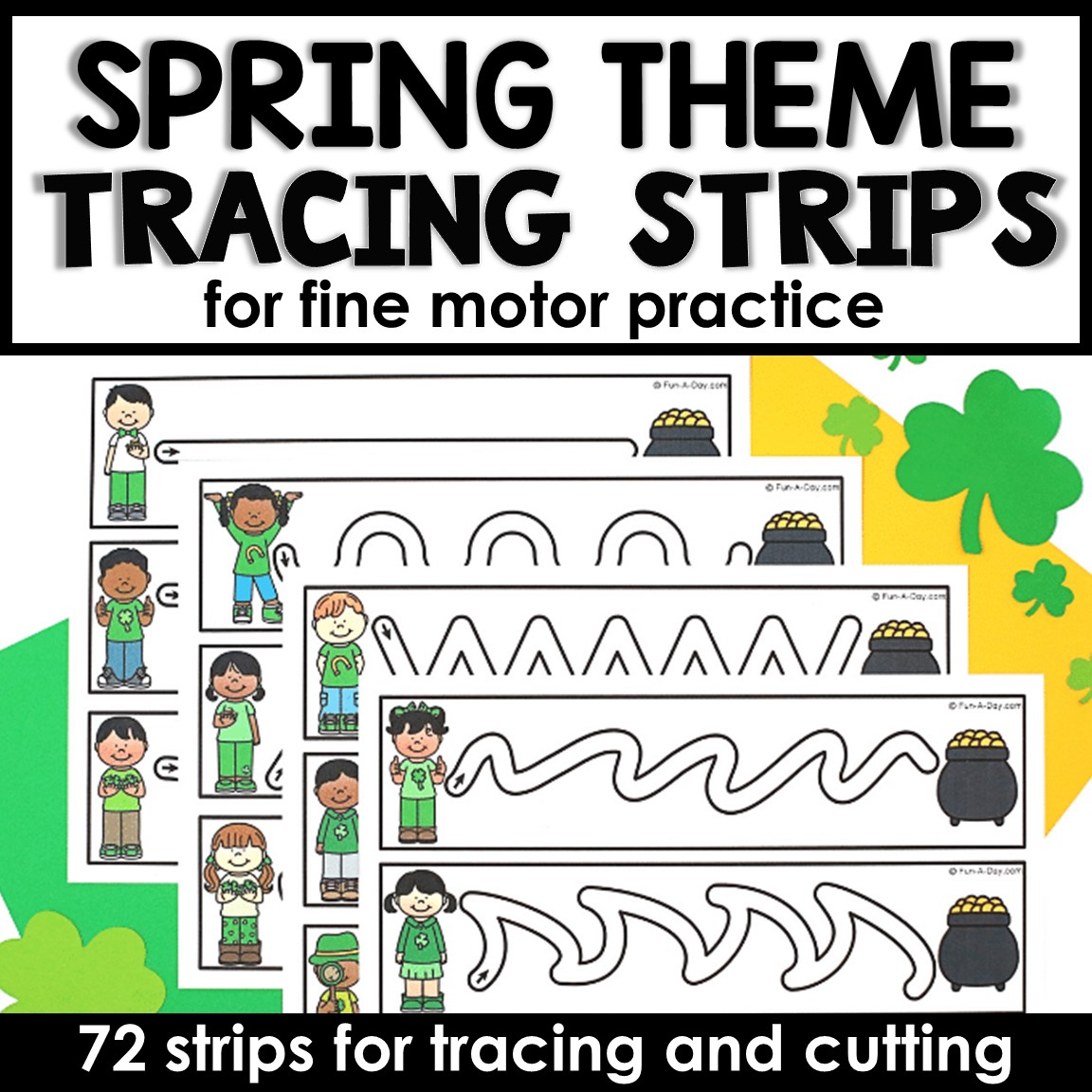Super Easy Bee Sensory Bin
Posted by admin on
This bee sensory bin is a fun addition to your spring activities for preschoolers and kindergarten kids! You can set it up during your next insect or bee theme, or just because the kids love bees.
The bee sensory play is so easy to put together, and you can definitely make adjustments based on the materials you have on-hand. So no need to stress if you don’t have the exact same items used here.
Your students practice language development, fine motor skills, math concepts, and sensory exploration with the playful bee invitation. Plus, the bin makes a great base for math or literacy manipulatives. Or consider pairing it with a book. So many possibilities!
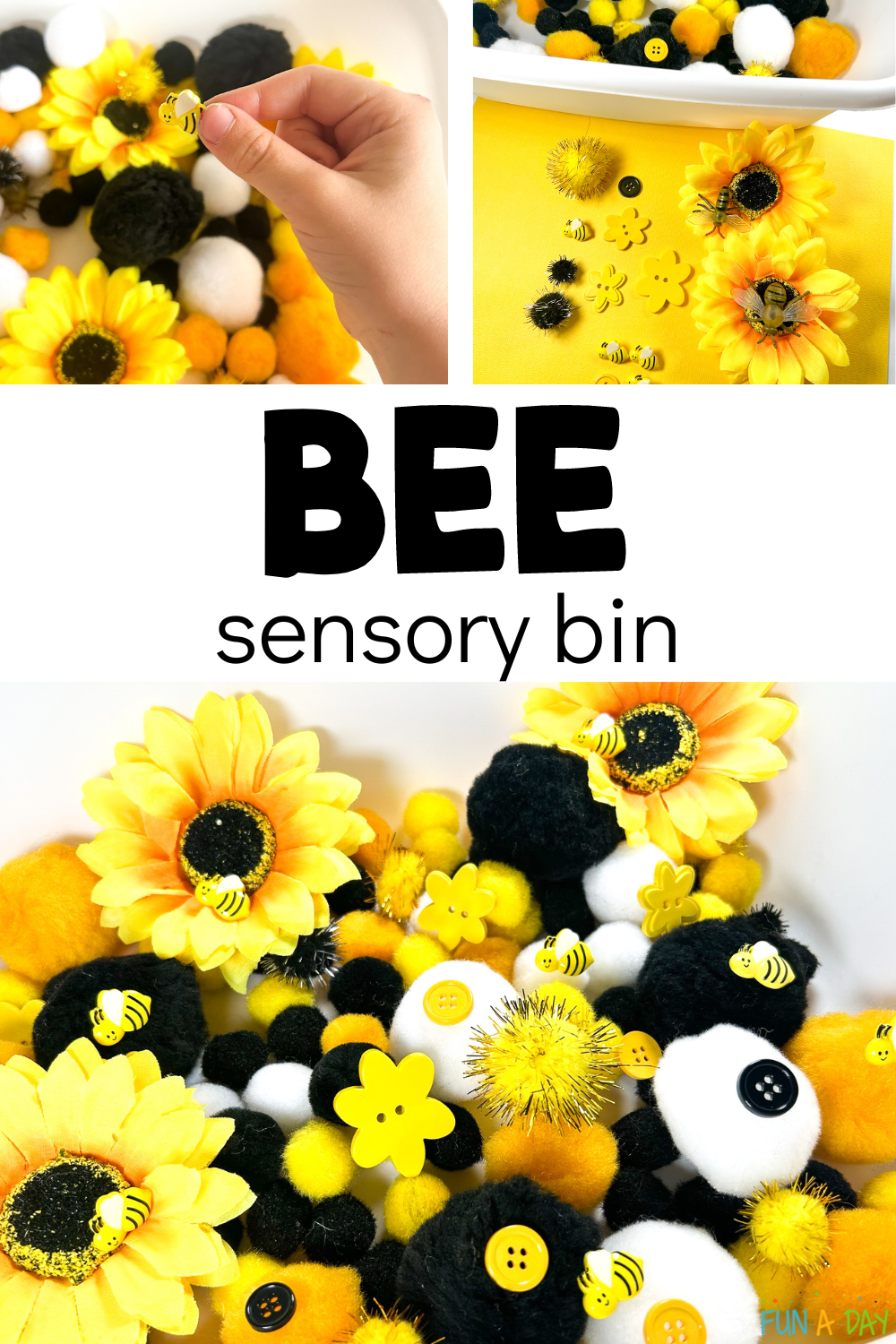
Can your fingers almost feel how soft the pompoms are in this buzzing sensory bin? And the simplistic color palette is so easy on the eyes. All in all, a fun and engaging sensory experience for your students. Read below for all of the details.
Bee Sensory Bin
Before we get started, decide if you want to make this on a small scale or a large scale. Individual sensory bins are great for transitions, like after lunch or while waiting for kids to arrive in the morning. Larger sensory tables let kids explore the items together. Both are equally as fun!
Materials for the Bee Sensory Play
Once you’ve decided on the scale of the play, it’s time to set everything up. Here are the items used in our bee sensory bin (I may get commissions for purchases made through links in this post):
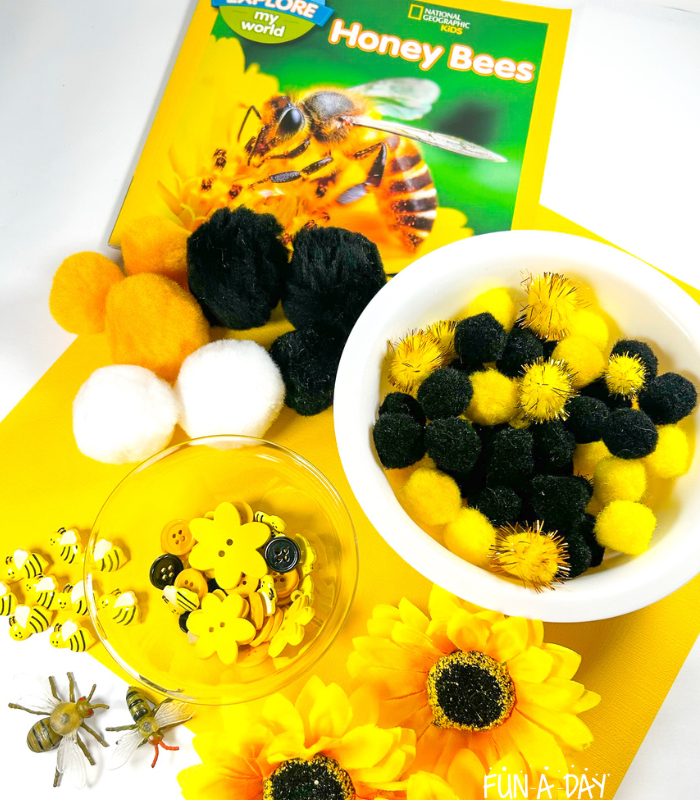
- Small bin or larger sensory table
- Pompoms of assorted sizes (yellow, black, white)
- Sparkly pompoms, too!
- Round yellow buttons
- Flower-shaped yellow buttons
- Bee buttons
- Fake sunflowers
- Bee toys
As I mentioned earlier, you can change things up a bit if you want to. Maybe you don’t have any flower buttons and want to leave those out. That’s okay! Or you can add some different types of fake flowers. You can even use a different sensory base if you’re not a fan of pompoms. Just don’t stress out if you have different supplies than what’s shown here.
How to Prep the Bee Sensory Bin
First, add the bee-themed pompoms to your bin or sensory table. If you’re using a larger table, you’re going to need more pompoms! I highly recommend adding some of the sparkly pompoms to the mix if you can. They add a bit of pizazz!
Next, add the fake flowers. We used faux sunflowers, mostly because they complement the colors of the bee sensory invitation. You can definitely add something different if you want to.
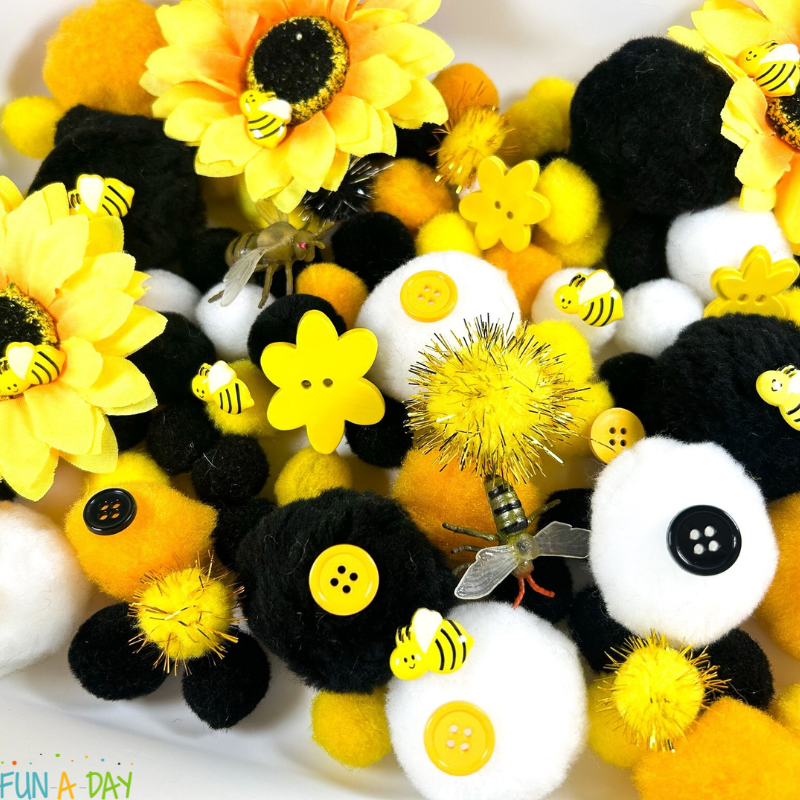
After that, place the buttons into the bin. I like to disperse the items somewhat evenly around the bin when setting it up. Yes, I know the kids are going to mix it all up. But there’s something to how it’s pleasing to the eye once it’s first set up.
Finally, put the bee toys into the bee. We only used a couple, but you can definitely add a lot more. It just depends on what you have access to. Again, with a larger bin (and more kids playing in the bin), I’d suggest having more bees.
If you want to add any sensory bin tools, now is the time to do so. We didn’t add anything else this go around, but you definitely can.
Playing and Learning with the Pompom Sensory Bin
This bee sensory bin, like all sensory invitations, is open-ended. That means the children get to decide how to interact with the materials (within your general classroom rules and expectations, of course). So you’ll see a variety of things as your students play in the bin. Some possibilities:
- Scooping and pouring everything with their hands
- Sorting the items based on color or type of material
- Lining the materials up
- Counting the buttons and bees
- Creating patterns using the buttons
- Stacking the buttons to see how high they’ll go
- Matching the materials based on color
- Creating a pretend story about the bees
- Buzzing the bees around from flower to flower
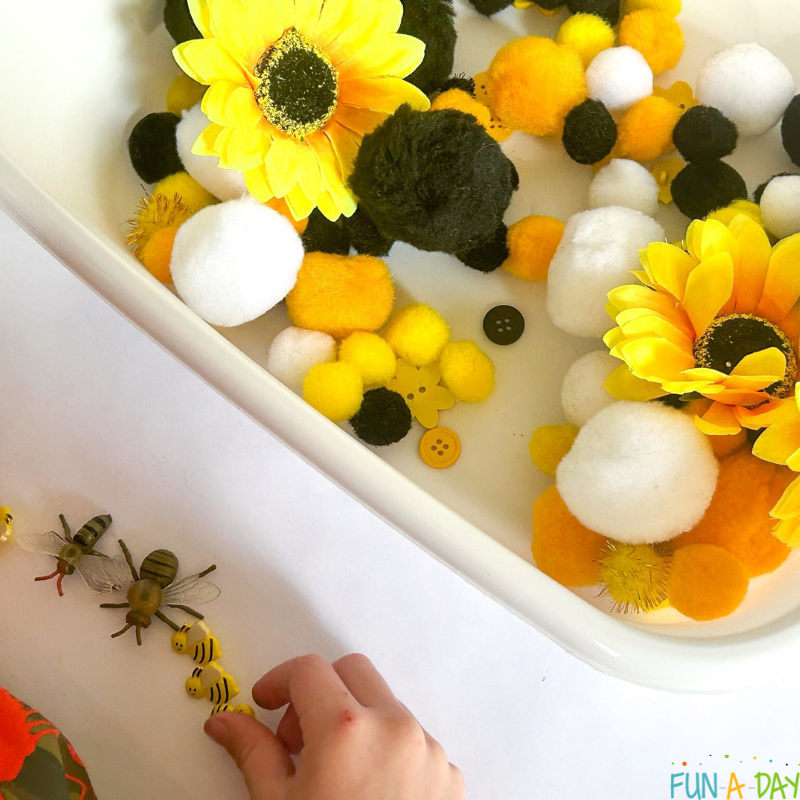
Okay, I’ll stop there. With an open-ended activity like this one, the possibilities really are endless. Your students are likely to come up with something completely different as they play and explore!
And here are some ways the kids are learning with the bee sensory bin:
- Comparing how the pompoms feel different from the buttons
- Descriptive vocabulary
- Discussing the bee life cycle
- Exploring the concept of pollination
- Sorting materials by color
- Making patterns with the items in the bin
- Counting the pompoms
- Problem-solving with their peers
- Creating a pretend play story as a group
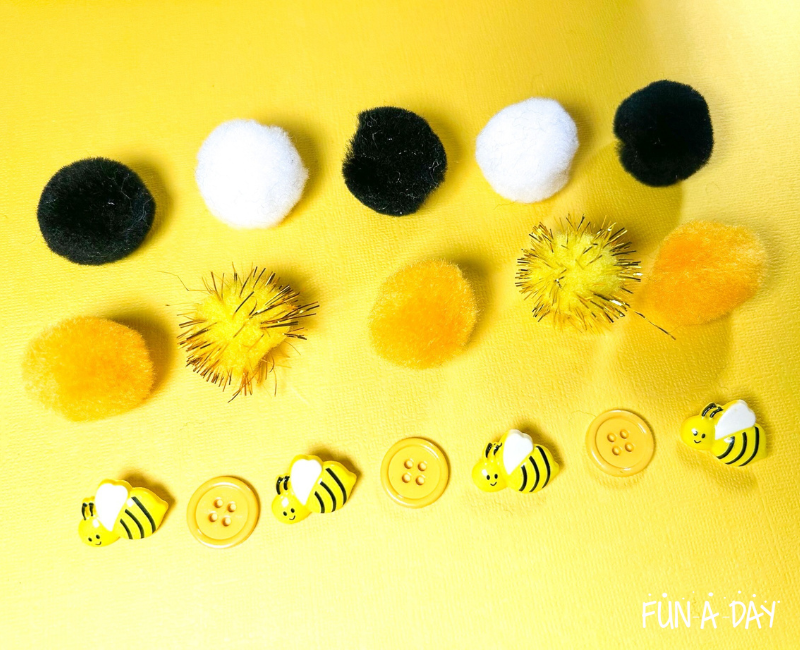
As you can see, there are opportunities to explore literacy, math, science, and sensory skills with one simple sensory bin! Of course, there’s nothing wrong with setting up a bee sensory bin just for the fun of it, either!
More Bee Activities for Kids
If your students get a kick out of this bee sensory bin, they might like the following ideas too:
- Bee Slime
- Spring Bee Find and Cover the Letter
- Bee Sensory Bottle
- Painted Rock Bee Art Project
- Bumble Bee Counting Cards
- Angry Bees Game
- Bumble Bee Craft for Kids
Do you have any favorite bee ideas to share?
Spring Fine Motor Pack
I mentioned earlier that you can add more items to the bee sensory bin. I think these spring-themed cutting and tracing strips would be a great addition! The kids can hunt for them in the bin, and then use the pompoms and buttons to slide from left to right. What a great way to work on fine motor skills and left-to-right directionality. Plus, you can reuse the fine motor strips in multiple ways when you’re done with the bin. Click on the image below to get your own:
You can also find us on Teachers Pay Teachers. And if you love our fully-developed, done-for-you resources, be sure to check out The Pack. It’s our membership for early childhood educators -they gain access to everything at a greatly reduced rate!
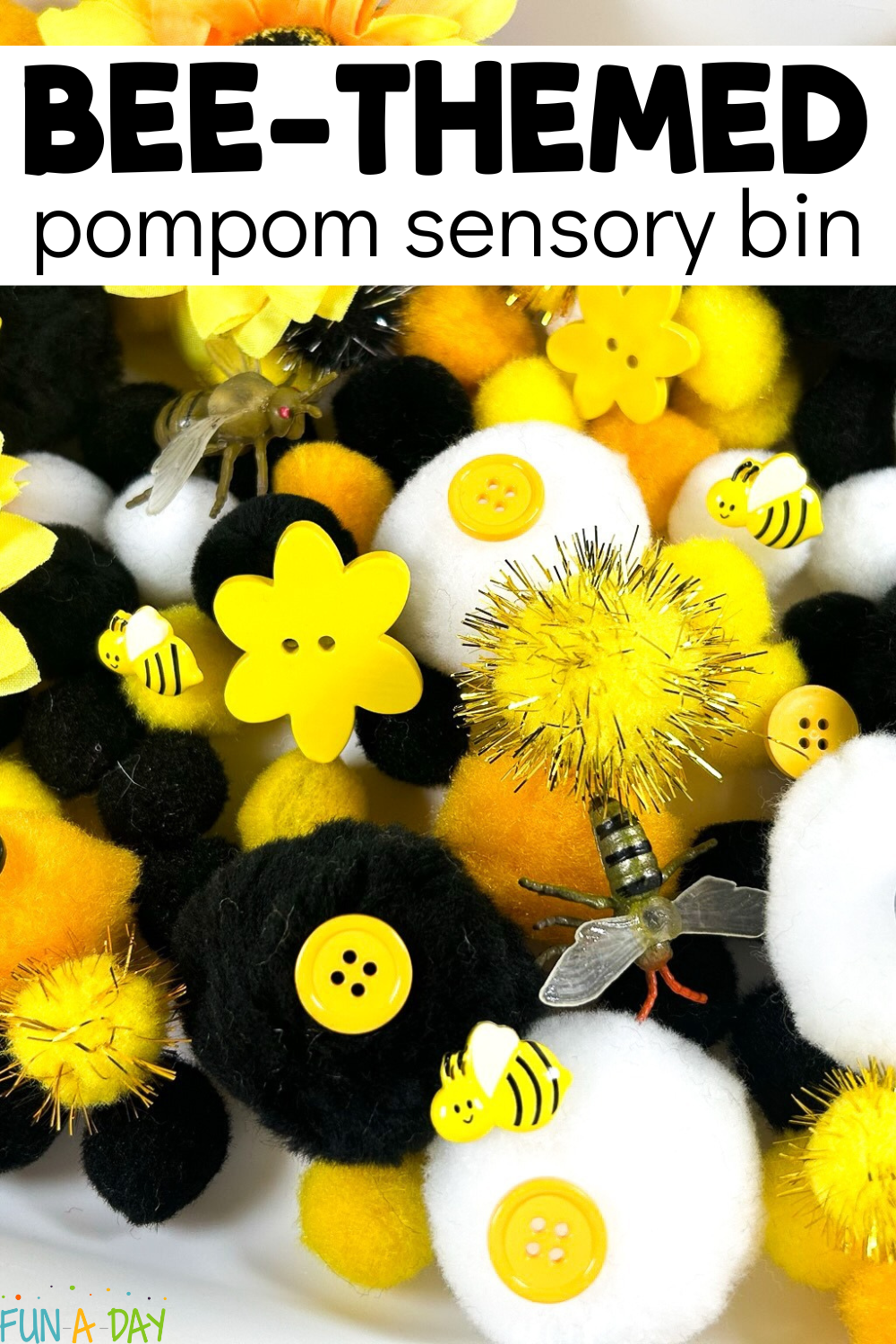
The post Super Easy Bee Sensory Bin appeared first on Fun-A-Day!.

